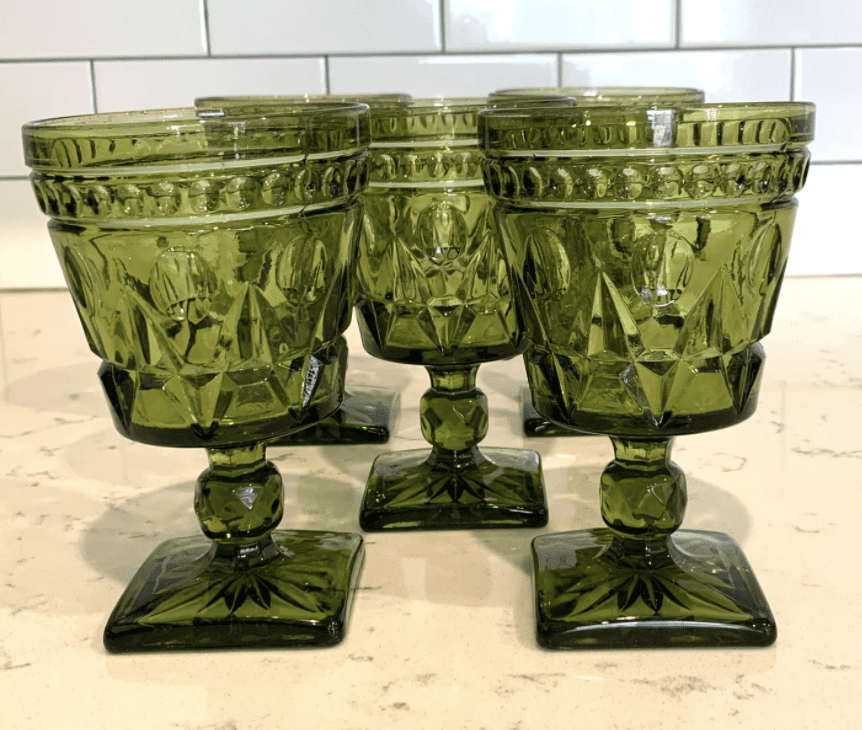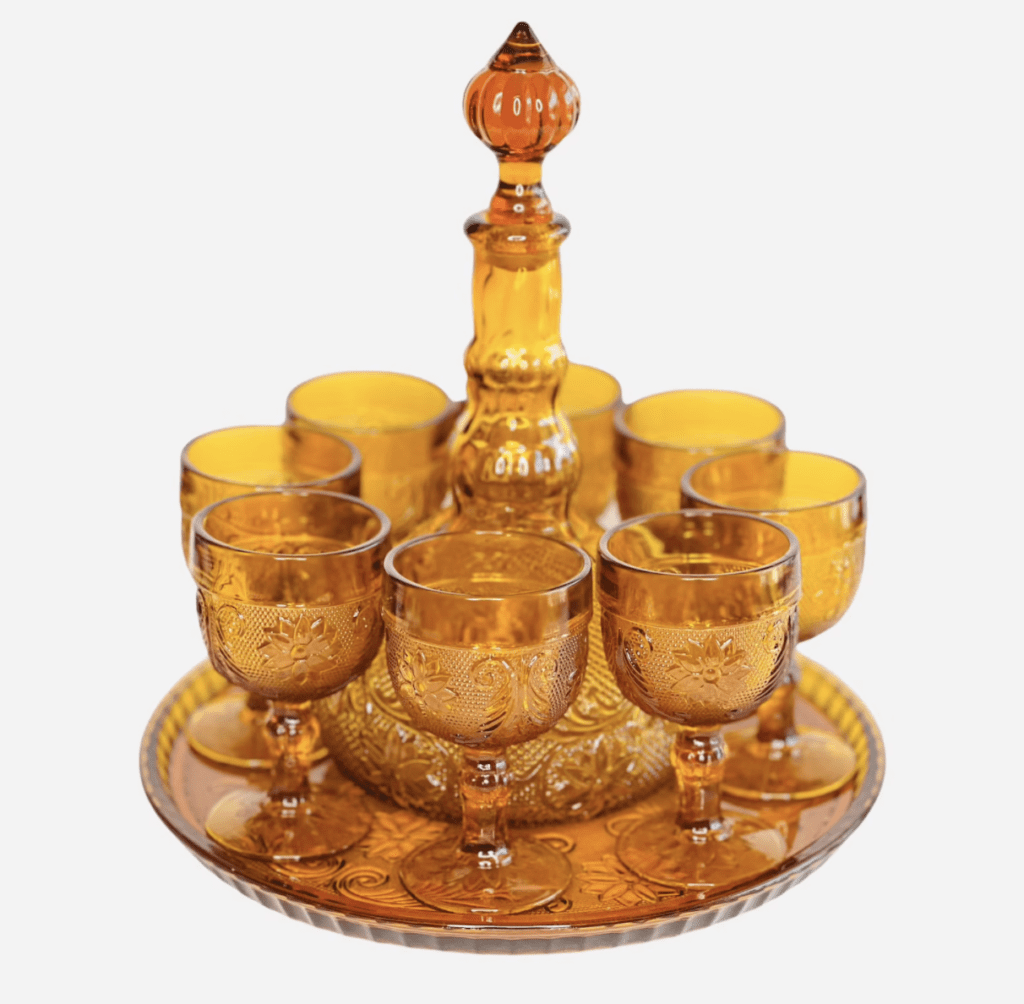Vintage glass is often collected by people who love antique items. Although there are many different types of antique glass, one of the most popular types is Indiana glass. However, what do you have to do to identify and determine the value of Indiana glass?
To identify Indiana glass, look for the maker’s mark and determine the pattern on the glass. Known patterns include Christmas Candy, Wild Rose, Daisy and Button, Magnolia, and Park Lane. Indiana glass costs $6-$3,000 depending on the rarity and quality of the piece.
Indiana glass is fascinating, especially if you want to learn more about it because you want to start collecting it. More information about the value and how to identify Indiana glass is below.

How Can You Identify Indiana Glass?
The best way to identify Indiana glass is to buy a book that has all Indiana glass patterns listed. Books that have these patterns listed can give you tips on how to identify the patterns and flaws in the glass. One book that is extremely useful is A Century of Indiana Glass by Craig S. Schenning. It costs $30 on Amazon.
Other great resources that you can use to help you learn about Indiana glass and determine if you have a genuine piece are online videos, various articles, and employees or owners at antique stores that often deal with Indiana glass. If you are part of an antique glass forum, ask questions about Indiana glass, as other forum users may know a lot of information about Indiana glass.
To identify Indiana glass, you need to know what colors and patterns the Indiana Glass company produced, as all Indiana glass pieces were made by the Indiana Glass Company. Searching for images online can help you understand what the glass looks like so that you are aware of what the colors and patterns look like.
Indiana glass is the only product on the market that has the glass patterns and colors used by the Indiana Glass Company. This is because they remained in operation long after the Great Depression and closed in 2002, so there wasn’t a lot of competition. Many glass companies tried to avoid making glass that looked like the pieces made by the Indiana Glass Company for various reasons.
How Can You Tell if Indiana Glass is Real?
There are currently no fake Indiana glass pieces on the market because of how recently the glass was made and because of a variety of other reasons. This makes it easy to determine if the Indiana glass piece that you have is real.
However, if you think that you have a fake Indiana glass piece, take the glass that you have to a local antique store or send it to be evaluated by an expert. They will tell you if you have a real piece of Indiana glass and how valuable it is so you can sell it anytime you want.
If the Indiana glass that you have looks like it was made recently, is not damaged in any way, has a maker’s mark, has an extremely flawed pattern, is made of plastic, or was sold in a store that does not sell antiques, you don’t have a piece of genuine Indiana glass.
Does Indiana Glass Have a Makers Mark?
Indiana glass does not have a maker’s mark, which makes it hard for people to identify Indiana glass. However, it is still possible to do so because of the patterns and colors the company produced. (Source)

One of the reasons why the Indiana Glass Company didn’t put a maker’s mark on the glass produced when they were still in business is because it was not a common practice when the glass was first produced. Also, by the time the company went out of business, there was no point in putting a maker’s mark on the glass as they made quite unique glass, so people often knew who made the glass when they looked at various pieces.
How Much is Indiana Glass Worth?
Indiana glass is worth $6-$3,000, so there is a massive difference in the value of various pieces. Less valuable pieces typically cost $6-$60, but more valuable pieces are typically worth $100-$3,000. (Source)
The rarer the color or pattern of an Indiana glass piece, the more valuable it will be. The size and amount of damage done to the glass will also contribute to the value of the Indiana glass. If your Indiana glass is small and has many chips or cracks, it will not be very valuable. However, if you have a piece of Indiana glass that is a rare color like blue or red, it will likely be extremely valuable, especially if it is quite large or has a unique pattern.
The pattern printed onto Indiana glass contributes to the value of the piece. Some patterns were produced for many years, while others were only printed for a short time. The shorter the pattern was produced, the more valuable the piece will be.
Indiana glass that was made shortly before 2002, when the company went out of business, is not as valuable as the glass made when the company originally opened. This is because of how recently the glass was made. The older the glass is, the more valuable it will be.
Indiana glass is less valuable than many other types of antique glass because of how long the company was open, how much glass they made, and the quality of the glass. Because there is a surplus of glass, it is not extremely valued by antique glass lovers. Also, it was made semi-recently, so some Indiana glass pieces are not considered valuable antiques.

Overall, it is easy to identify Indiana glass if you have the glass in front of you. However, if you do not often have to identify the patterns on the glass, you should likely have a book with the patterns listed nearby so you can be absolutely sure that you have correctly identified the pattern.
Although Indiana glass pieces are often not considered valuable, it will likely increase in value in the future, so keep the pieces you have safely tucked away.

